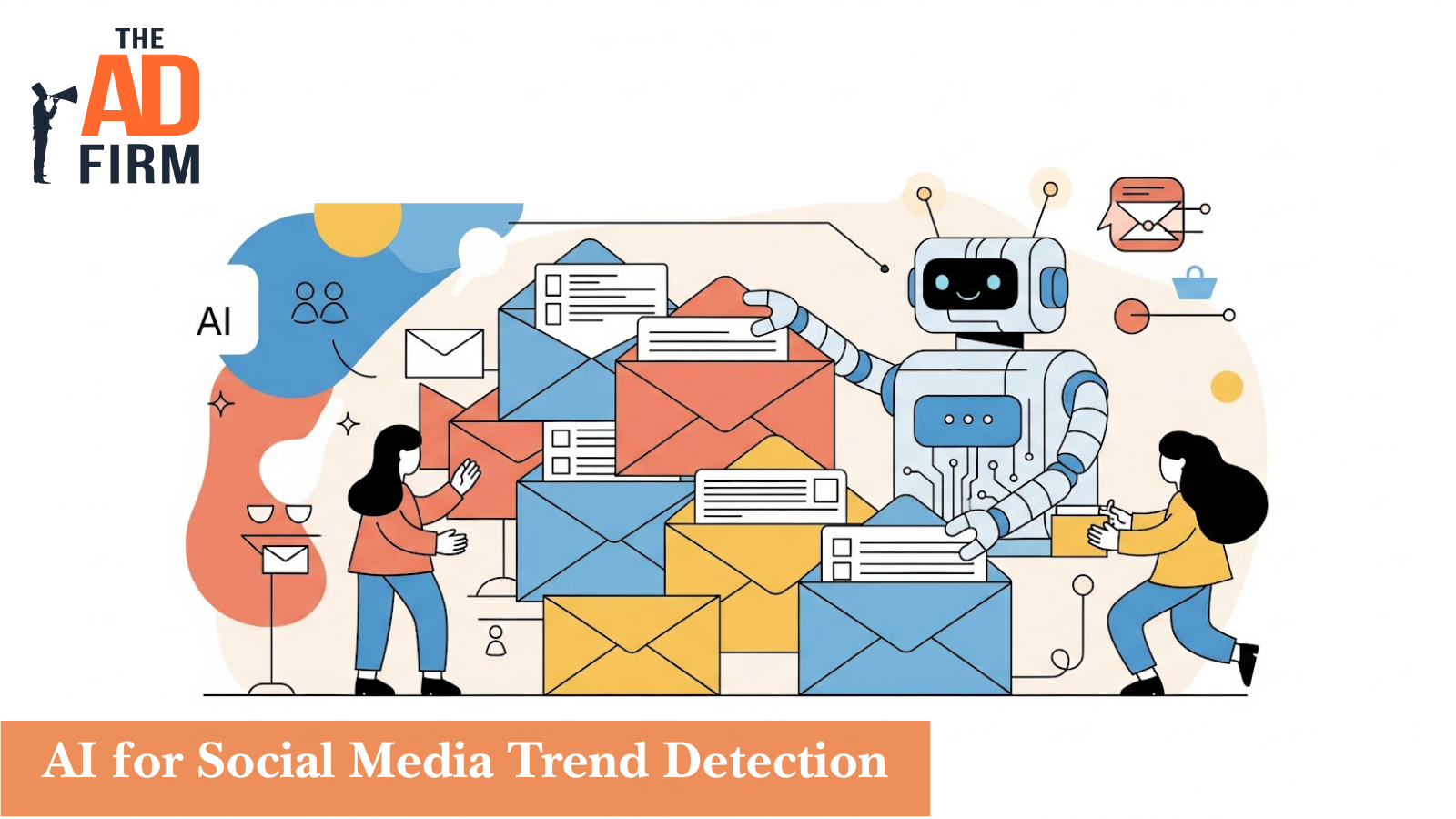Running a successful email marketing campaign used to mean building a few static lists and hoping your audience stayed engaged. But customer behavior isn’t static, and neither are their expectations.
As people browse, click, and drop off at different moments, relying on fixed rules and assumptions makes it easy to miss the mark. That’s where AI-driven segmentation and real-time retargeting make the difference. Much like how AI SEO helps businesses adapt to changing search behaviors, AI-powered email tools let you respond to customer actions instantly.
This blog guides you through how AI changes the game and how to utilize it without requiring technical skills or complex tools.
Why Traditional Email Segmentation Isn’t Enough Anymore
Email marketing has come a long way, but most businesses still rely on outdated methods to group their subscribers. These manual approaches are too rigid to keep pace with the rapid shifts in customer behavior that are occurring today.
- Static rules miss the full picture: Traditional segments are often built on unchanging traits, such as age, gender, or past purchases. These traits overlook real-time behavior, such as current browsing activity or signs of disengagement. As a result, subscribers may be inadvertently assigned to the wrong group and receive irrelevant emails. This disconnect results in lower open rates and reduced overall engagement.
- Behavior changes faster than segments can update: Someone might click through your product page today and lose interest by tomorrow. Manual systems typically rely on scheduled updates, so they’re too slow to respond to this kind of fast-shifting behavior. That means your email might arrive after the moment has passed, missing the window of interest. This delay can result in missed conversions and wasted sending volume.
- List quality decays over time: Subscriber interests and habits evolve constantly, but static segments don’t evolve with them. Unless you manually review and update your lists, you risk sending emails to people who are no longer a good fit. This often results in users unsubscribing or marking emails as spam. Over time, your campaigns become less efficient without you realizing it.
- Manual rules create blind spots: When humans set the rules, we tend to overlook nuanced signals, like repeat late-night browsing or users who visit without clicking anything. Subtle patterns like these often signal intent, but manual rules typically ignore them. Without tracking these subtleties, you miss out on key opportunities to engage the right people at the right time. The result is often generic messaging that fails to resonate.
- Segmentation becomes unscalable: As your list grows from hundreds to thousands, the number of potential segment combinations multiplies fast. Trying to manage dozens of overlapping conditions manually becomes chaotic and inconsistent. This often leads to duplicated efforts or inconsistent messaging across campaigns. A manageable setup can quickly spiral out of control, slowing down your overall strategy.
How AI Builds Smarter Segments Automatically
Streamline Your Digital Assets with The Ad Firm
- Web Development: Build and manage high-performing digital platforms that enhance your business operations.
- SEO: Leverage advanced SEO strategies to significantly improve your search engine rankings.
- PPC: Craft and execute PPC campaigns that ensure high engagement and superior ROI.
Manual rules can only go so far before they hit a wall. AI changes the game by analyzing user behavior at scale and creating segments that adapt in real-time without requiring constant human input.
1. Behavior-Based Clustering Instead of Static Lists
A digital marketing agency using AI can go beyond basic demographics and tap into how users actually interact with your brand. These behavioral signals, such as clicks, time spent, and purchase patterns, form the foundation for smarter audience grouping that adapts in real time.
- Tracks live engagement patterns: AI watches how users click, browse, buy, or ignore content across your emails, website, and product pages. This provides a much clearer picture of what they care about right now, not just what they have done in the past. Instead of tagging someone based on a one-time purchase, you’re grouping them based on how they act consistently. This ensures your messaging stays aligned with current intent.
- Form natural behavior clusters: Instead of you defining rigid criteria, AI discovers patterns and groups people who behave similarly, like “window shoppers” or “frequent buyers.” These clusters emerge organically, often revealing segments you wouldn’t think to create manually. As a result, you can target messages to actual habits rather than assumptions. This makes personalization far more accurate and effective.
- Eliminates constant rule-setting: With traditional lists, marketers must constantly update criteria to keep them relevant. AI automates this by re-clustering people as their behaviors shift. You don’t need to create dozens of “if-then” rules for every campaign. The system does the heavy lifting in the background, saving you time and guesswork.
2. Predicting What Each Segment Will Do Next
AI doesn’t just organize your contacts, it also forecasts what they’re likely to do. This lets you act before opportunities are lost.
- Anticipates future actions: AI models evaluate past behaviors to predict what a person will likely do next, such as making a purchase or unsubscribing. These predictions help you prepare the right message before that action even happens. It’s the difference between reacting late and reaching someone at the perfect time. That edge can significantly boost open and conversion rates.
- Improves message timing and tone: Knowing what a group is likely to do allows you to customize how and when you reach out. For example, if a segment is likely to churn, you can send a re-engagement offer before they disappear. Or if someone’s showing signals of buying again, you can pitch an upsell right away. The key is delivering content that feels timely, not random.
- Reduces wasted sends: Rather than blasting your entire list with generic messages, predictions help narrow your focus. You’re not guessing who’s still interested, you’re working with live probabilities. This results in fewer unsubscribes, improved engagement, and more effective campaigns. Over time, it also helps maintain a healthier email list.
Transform Your Online Strategy with The Ad Firm
- SEO: Achieve top search rankings and outpace your competitors with our expert SEO techniques.
- Paid Ads: Leverage cutting-edge ad strategies to maximize return on investment and increase conversions.
- Digital PR: Manage your brand’s reputation and enhance public perception with our tailored digital PR services.
3. Continuous Learning Improves Over Time
Unlike static rules, AI systems never stop adjusting. The more data they process, the better they get, which means your segmentation grows smarter automatically.
- Adapts to changing behaviors: As users shift their engagement patterns, visiting new product pages, ignoring old topics, and clicking at different times, the AI picks up on these changes. It doesn’t rely on outdated assumptions. Instead, it reshapes your segments to match your audience’s current habits. This way, your ecommerce email marketing stays aligned with your customers instead of lagging behind.
- Learns from every new interaction: Every open, click, and page visit becomes new fuel for the system. The more it sees, the more accurate it becomes at grouping users and predicting actions. This keeps your segmentation fresh without requiring a manual audit. You’re always working from the most current view of your audience.
- Scales without extra work: As your list grows, traditional segmentation gets harder to manage. AI makes that growth effortless by applying the same smart logic to new contacts without extra setup. It doesn’t matter if you have 1,000 or 100,000 subscribers; the system adjusts automatically. That means your personalization can scale with your business.
Mistakes to Avoid with AI-Powered Segmentation
Even the most advanced AI tools require proper setup and oversight to function effectively. Without the right guidance, such as what an experienced SEO company provides, these common missteps can quietly derail your segmentation efforts and reduce the impact of your campaigns if not addressed promptly.
- Assuming AI is “set it and forget it”: While AI does automate many tasks, it still needs human review to stay aligned with your goals. Without occasional checks, it may drift into targeting segments that don’t match your brand strategy. You’re not replacing human input, you’re complementing it with faster data handling. Think of it as a co-pilot, not an autopilot.
- Neglecting to define campaign goals upfront: If you start segmenting without knowing your specific goal, such as reactivating cold leads or promoting a product, the segments may not be effective. AI needs direction to align with the outcomes you actually care about. A vague goal like “more engagement” isn’t enough for smart targeting. You have to connect the segmentation to a clear business objective.
- Forgetting to adjust the creative for each segment: Some marketers build excellent segments, but send duplicate content to all of them. AI can separate your audience, but it can’t rewrite your emails for you. If the content doesn’t speak to the segment’s specific behavior or needs, the benefits of smart grouping are lost. Tailored creative is just as crucial as tailored targeting.
- Treating all segments as equal priority: Not every group identified by AI is worth the same level of effort or budget. For example, a highly engaged but tiny segment might look promising but offer limited returns. On the other hand, a larger “warm” group might be more cost-effective to target. You still need to evaluate the business value of each segment before taking action.
- Failing to test and compare results regularly: AI segmentation isn’t a one-time fix; it should be part of an evolving strategy. If you don’t A/B test your campaigns or compare segment performance, you can’t improve. Some segments may surprise you by responding better or worse than expected. Regular testing helps you refine both the segment definitions and the emails that are sent to them.
Read also: Email Marketing Flops: 5 Reasons Your Emails Land in Spam Folders
Enhance Your Brand Visibility with The Ad Firm
- SEO: Enhance your online presence with our advanced SEO tactics designed for long-term success.
- Content Marketing: Tell your brand’s story through compelling content that engages and retains customers.
- Web Design: Design visually appealing and user-friendly websites that stand out in your industry.
Ready to Supercharge Your Email Strategy?
If managing lists and retargeting campaigns feels like a guessing game, you’re not alone. At The Ad Firm, we help businesses take the guesswork out of email marketing by building AI-powered segmentation and retargeting flows that actually reflect how your audience behaves.
Our team blends intelligent automation with human strategy to craft emails that feel timely, relevant, and personal without the manual overload. Whether you’re starting from scratch or refining an existing setup, we make sure your email strategy scales with your business, not against it.
Let us help you turn raw data into tangible results. Reach out today to see how The Ad Firm can make your email campaigns smarter, faster, and more effective.





